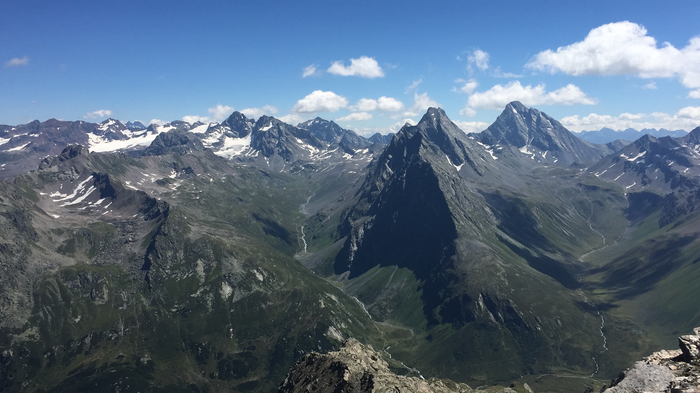Global warming has a particularly pronounced impact on the Alpine region. Like the Arctic, this European mountain range is becoming greener. Writing in the journal Science, researchers from the University of Lausanne and the University of Basel have now used satellite data to show that vegetation above the tree line has increased in nearly 80% of the Alps. Snow cover is also decreasing, albeit so far only slightly.

Credit: Sabine Rumpf
Global warming has a particularly pronounced impact on the Alpine region. Like the Arctic, this European mountain range is becoming greener. Writing in the journal Science, researchers from the University of Lausanne and the University of Basel have now used satellite data to show that vegetation above the tree line has increased in nearly 80% of the Alps. Snow cover is also decreasing, albeit so far only slightly.
Melting glaciers have become a symbol of climate change in the Alps. Now, the reduction in snow cover is already visible from space but this is by no means the biggest change. This is the conclusion of a research team led by Professor Sabine Rumpf from the University of Basel and Professor Grégoire Mariéthoz and Professor Antoine Guisan from the University of Lausanne.
Working with colleagues in the Netherlands and Finland, the researchers investigated the change in snow cover and vegetation using high-resolution satellite data from 1984 to 2021. Over this period, plant biomass above the tree line increased in more than 77% of the observed area. This phenomenon of “greening” due to climate change is already well documented in the Arctic and starts also to be detected in mountains.
Greater plant biomass in three-quarters of the Alps
“The scale of the change has turned out to be absolutely massive in the Alps,” says Sabine Rumpf, lead author of the study and, since February, assistant professor at the University of Basel. The Alps are becoming greener because plants are colonizing new areas and the vegetation is generally becoming denser and taller.
Previous studies have primarily focused on the influence of global warming on Alpine biodiversity and changes in the distribution of plant species. Until now, however, no one had conducted such a comprehensive analysis of the changes in vegetation productivity in the Alps. The authors show that the increase of plant biomass is primarily due to changes in precipitation and longer vegetation periods as a result of rising temperatures.
“Alpine plants are adapted to harsh conditions, but they’re not very competitive,” says Rumpf. As environmental conditions change, she says, these specialized species lose their advantage and are outcompeted: “The unique biodiversity of the Alps is therefore under considerable pressure.”
Already a slight reduction in snow cover
In contrast to vegetation, the extent of snow cover above the tree line has only changed slightly since 1984. For their analysis, the researchers excluded regions below 1.700 meters, glaciers and forests. In the remaining regions, they found that snow cover had decreased significantly in almost 10% of the area. This may not sound like a lot, but the researchers are keen to highlight that it is nevertheless a worrying trend.
“Previous analyses of satellite data hadn’t identified any such trend,” explains Antoine Guisan, one of the two senior authors of the study. “This may be because the resolution of the satellite images was insufficient or because the periods considered were too short.”
“For years, local ground-based measurements have shown a decrease in snow depth at low elevations,” adds Grégoire Mariéthoz. “This decrease has already caused some areas to become largely snow-free.” Based on the satellite data, it’s possible to distinguish whether a specific area is covered with snow or not, but doesn’t allow to draw conclusions about snow depth.
As global warming continues, the Alps will turn more and more from white to green, creating a vicious circle: “Greener mountains reflect less sunlight and therefore lead to further warming – and, in turn, to further shrinkage of reflective snow cover,” says Rumpf. Warming also causes further melting of glaciers and the thawing of permafrost, which may lead to more landslides, rockfalls and mudflows. Furthermore, Rumpf emphasizes the important role of snow and ice from the Alps in the supply of drinking water and, not least, for recreation and tourism.
Journal
Science
DOI
10.1126/science.abn6697
Article Title
From white to green: Snow cover loss and increased vegetation productivity in the European Alps
Article Publication Date
3-Jun-2022




